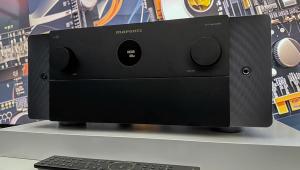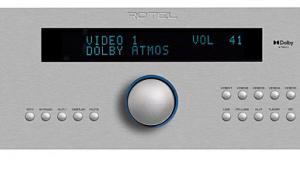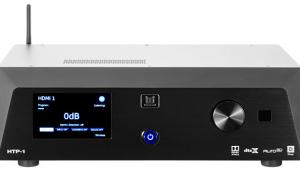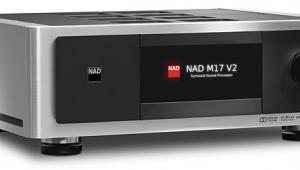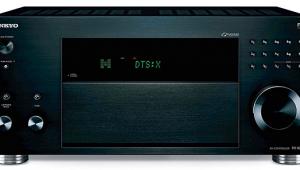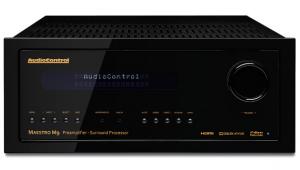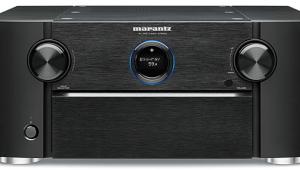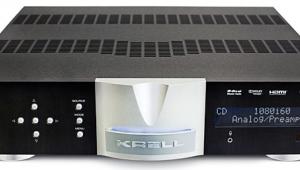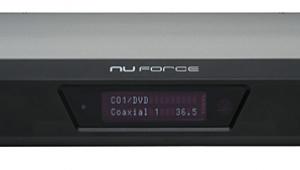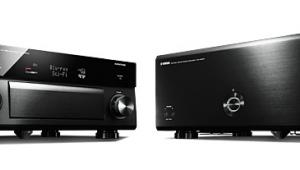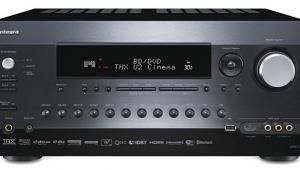Krell Foundation Surround Processor Page 2
The Foundation’s iPad remote is intended to also assist with setup and is said by Krell to be the reason the company skipped the onscreen display. When you use it, the Foundation’s front-panel readout is blacked out, and I found that some of the virtual buttons didn’t work and were fringed in blue, though Krell noted as we went to press (after I no longer had my sample) that the app is now working perfectly.
Navigating through the menu system can be frustrating. After I’d run the ARES program’s EQ function and not liked the attenuated bass, the only way I could remove the settings and return to audio ground zero was to restore all factory settings—and that’s after I’d named the inputs and configured inputs, outputs, and trigger functions. Perhaps there was an alternative method that wouldn’t have required complete setting erasure, but I couldn’t figure it out, nor did I see it in the sketchy instructions.
Breathtaking Sonic Performance That You Do Get
Switching to the Foundation from my moderately priced but sonically accomplished Marantz AV7005 and especially from the previously reviewed Integra DHC-60.5 was transformational. It was as if the entire system had been changed, including the Sonics By Joachim Gerhard speakers (now branded Canalis).
With the Foundation in place, you could stare down all five speakers (and the subwoofer) and not hear sound emanating from any of them. That is a high-performance audio quality rarely heard in commercial home theater, particularly from the usually easy-to-identify center-channel speaker.
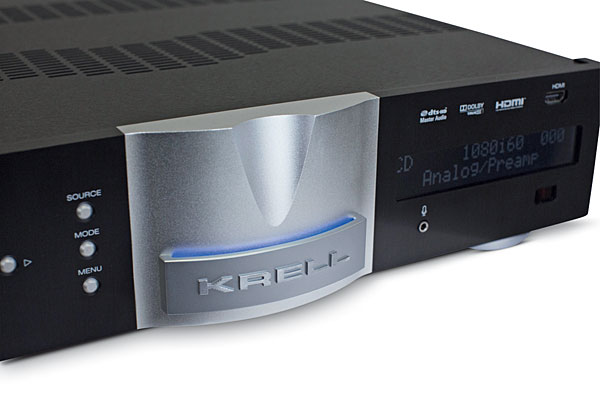
When watching local news becomes enticing because the anchor’s voice sounds so lifelike and transparent, you know something special is happening. What does that mean? Instead of metallic and/or boxy, muffled sound smeared against the speaker, a properly sized, three-dimensional, delicate, and transparent vocal bubble hovers in the same physical space occupied by the speaker.
The sonic attack is sharp and precise but not edgy or mechanical. That’s followed by a lifelike vocal sustain and an equally believable decay. Sibilants sound natural as they do in real life, though all of this is somewhat colored by what microphones—even the best ones—do to the human voice. But because it is timbrally coherent and the various events are timed perfectly, the result is a believable illusion, easy on the ears and overwhelmingly intelligible even at ultra-low sound levels.
The first movie I watched was the 3D edition of Life of Pi. It sounded as it looked: truly three-dimensional and not just due to the surround mix. Each channel’s delicate 3D sonic bubble, made up of individual 3D sonic elements, contributed to the floating sonic sensation. With all of these elements coherently merged in a single sonic bubble, the result was a giant, floating, shimmering, non-mechanical ether in the room approached but once before in my room by the even more minimalist Cary Audio 11a. The bubble’s borders extended well beyond all of the speakers’ physical boundaries, producing an enormous yet well-defined space, in which were placed solid yet three-dimensional images.
The Foundation lifted to exalted, billowy sonic heights Mychael Danna’s ethnically complex musical score filled with delicate, exotic Eastern percussive and wind accents as well as sweeping strings and familiar Franco-accordions. The Foundation maintained the clarity, dimensionality, and ease of even the most timbrally complex, dynamically challenging passages.
At one point, I chose to lie down on the couch. Despite the close proximity now to the left surround speaker, the room-filling 3D bubble maintained its integrity. I did not hear the left surround dominate, or in fact, the left surround at all. Instead, so three-dimensionally coherent and stable was the room bubble that the only change was a slight perspective shift.
The 192-kilohertz/24-bit Blu-ray Discs in Neil Young’s Archives Volume 1 box set reinforced the Foundation’s high-performance audio bona fides. On “Heart of Gold,” Kenny Buttrey’s kick drum approached the size, weight, and textural solidity I get on my big two-channel high-end rig downstairs. Of equal importance, the kick drum didn’t intrude into the physical or timbral space reserved for other instruments. Tim Drummond’s bass never merged with the kick drum to produce incorrect, amusical “mega-bass.” Young’s harmonica had an effervescent reediness and his voice an airy believability. You can easily and separately hear Linda Ronstadt’s and James Taylor’s background vocals.
On “Old Man,” the acoustic guitar’s metal strings ring, the snare on the left channel has that special live shimmer, and the echoey envelope surrounding the pedal steel floats in space. Young’s voice hovers believably.
Going back to my reference Marantz AV7005, good as it is for the money, produced a big let-down. Everything tamps downs spatially, harmonically, and texturally, airy reality quelled. What accounts for the Foundation’s sonic magic?
Technically, I cannot tell you, but I’m sure any person reading this could easily distinguish between the two renderings of these tracks—or more critically, not fail to be swept away and mesmerized by the Foundation’s sonically transportive qualities. Even the cable difference deniers (often also pre/pro sonic difference deniers) could easily distinguish between the Foundation and all (not most) of the less expensive mainstream competition.
Conclusion
If a relatively small company like Krell can produce these seductive, startlingly superior sonic riches, surely the big companies with their technological savvy and greater financial resources can too. For now, though, much to Krell’s relief, they seem to not be interested, perhaps believing that consumers aren’t either.
Yes, the Foundation’s user interface is clunky, and it doesn’t do much other than pass video and decode surround sound. You won’t get Pandora, Spotify, THX, and all of the other costly, licensed add-ons. Do you want swell gadgets or melt-in-your-ears sonics? During my evaluation period, I happened to listen to the Mobile Fidelity SACD version of Billy Joel’s “Say Goodbye to Hollywood” on my high-end two-channel system downstairs, then brought it up to listen on the Krell. I got upstairs much of what I got downstairs. Unlike every other “commercial” name-brand preamp/processor that’s passed through here, the Krell Foundation made me want to sit and listen. And that’s what it’s all about.

